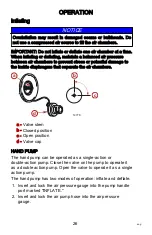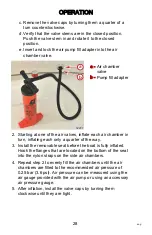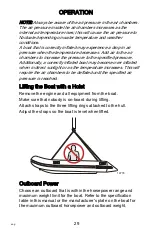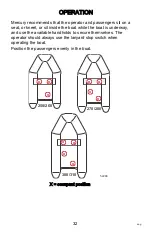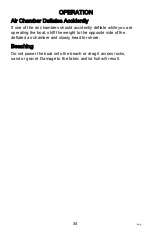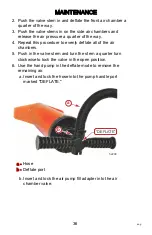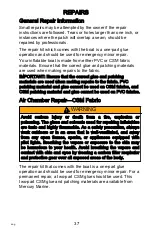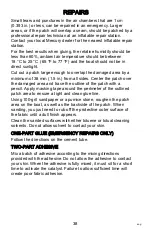
REPAIRS
eng
39
Apply two thin layers of adhesive using a short bristle brush in a
circular pattern on both the backside of the patch and the patch
area on the boat. Allow the first layer to dry completely
(approximately 15 minutes) before applying the second layer.
When the second layer is tacky, apply the patch to the prepared
area and press down firmly. Using a smooth object (the back of a
tablespoon works well), force out any air bubbles that may have
been trapped under the patch, working from the center of the
patch to the outside.
After removing the masking tape, use solvent to clean up any
excess glue, then place a 4–5 pound weight onto the patch and
allow 24 hours drying time before pressurizing the repaired air
chamber.
Air Chamber Repair—PVC Fabric
!
WARNING
Avoid serious injury or death from a fire, explosion or
poisoning. The glues and solvents used for repairing inflatables
are toxic and highly flammable. As a safety precaution, always
work outdoors or in an area that is well‑ventilated, and away
from any open flames, sparks, or appliances equipped with
pilot lights. Breathing the vapors or exposure to the skin may
be hazardous to your health. Avoid breathing the vapors and
contact with skin and eyes by wearing a carbon filter respirator
and protective gear over all exposed areas of the body.
The repair kit that comes with the boat is a one‑part glue
operation and should be used for emergency minor repair. For a
permanent repair, a two‑part adhesive for PVC fabric should be
used. The two‑part adhesive and patching materials for PVC
fabric are available from Mercury Marine.
Small tears and punctures in the air chambers that are 1 cm
(0.393 in.) or less, can be repaired in an emergency. Larger
areas, or if the patch will overlap a seam, should be patched by a
professional repair technician at an inflatable repair station.
Contact your local Mercury dealer for the nearest inflatable repair
station.


